DEFINITION OF TERMS:
- KEYSTONE means they are listed by National Wildlife Federation as core plants for a wildlife garden in my ecoregion (Ecoregion 8).
- NOT QUITE NATIVE means they are slightly out of range but adjacent to NYS as determined by GoBotany and NY Flora Atlas.
- Otherwise the plant is native to NYS or to the area noted.
MIDWEST NATIVE: Prairie clover (Dalea purpurea)

I had just one prairie clover plant. It came up every year for a while, but never spread and eventually was crowded out.
Now that I know it isn’t close to native, I’m just as happy.
** SPECIAL VALUE TO NATIVE BEES **
** SPECIAL VALUE TO BUMBLE BEES **
- Learn more:
- Wildflower Center: Prairie clover
Showy tick-trefoil (Desmodium canadense)
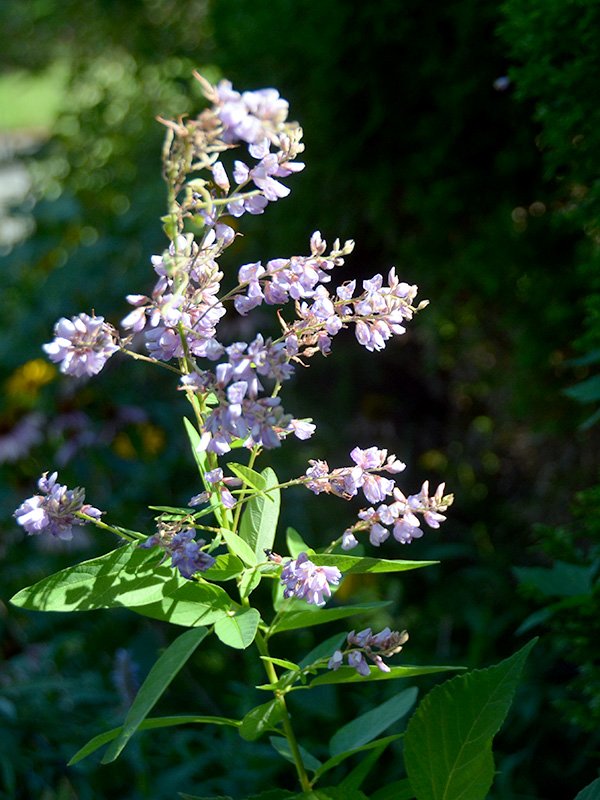
We bought this as a small seedling plant at our HGCNY 2021 Fall Plant Sale, and here it’s blooming in August 2022.
I didn’t put it in a very good place — between the arborvitaes and the driveway, so it doesn’t get much sun or space to grow. I’ll have to try moving it or starting some from its seed.
- Learn more:
- Wildflower Center: Showy tick-trefoil
Dutchman’s breeches (Dicentra cucullaria)
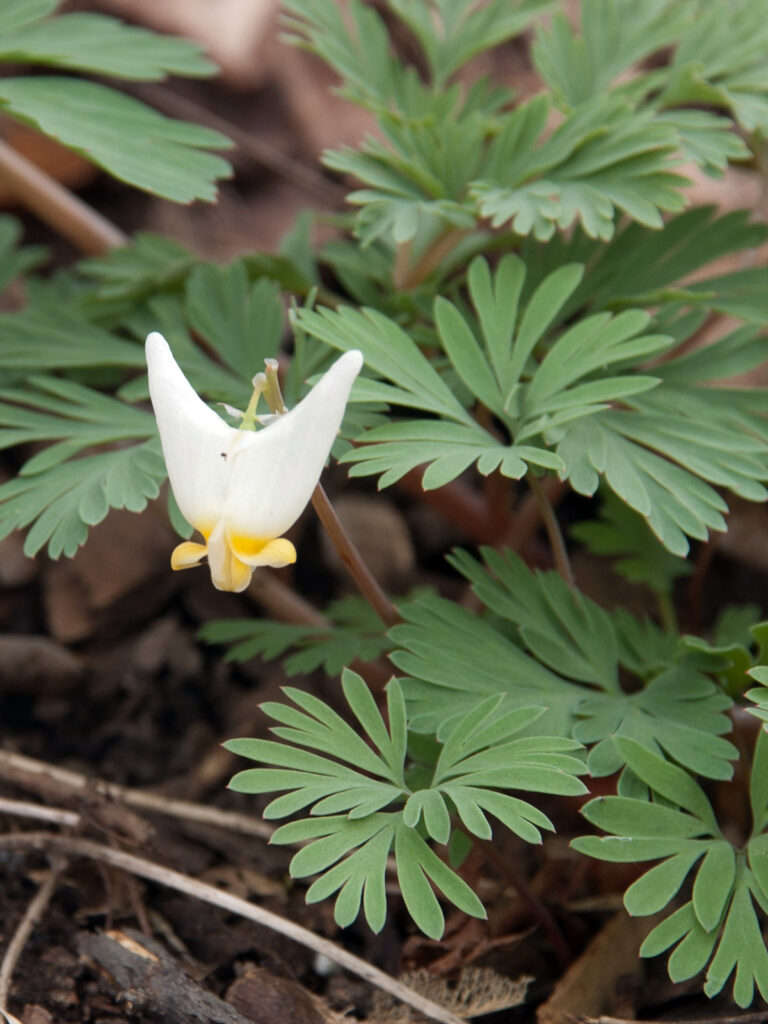
I had been eagerly awaiting the first flower. I had bought a simple little bulb and didn’t notice a flower the first year. No one would buy this for a massive floral display, but this smallish flower is extremely charming, and the foliage is beautiful. A real delight in the spring!
Wildlife: Bees
** SPECIAL VALUE TO BUMBLE BEES **
- Learn more:
- Wildflower Center: Dutchman’s breeches
NOT QUITE NATIVE: Everblooming bleeding heart (Dicentra eximia)
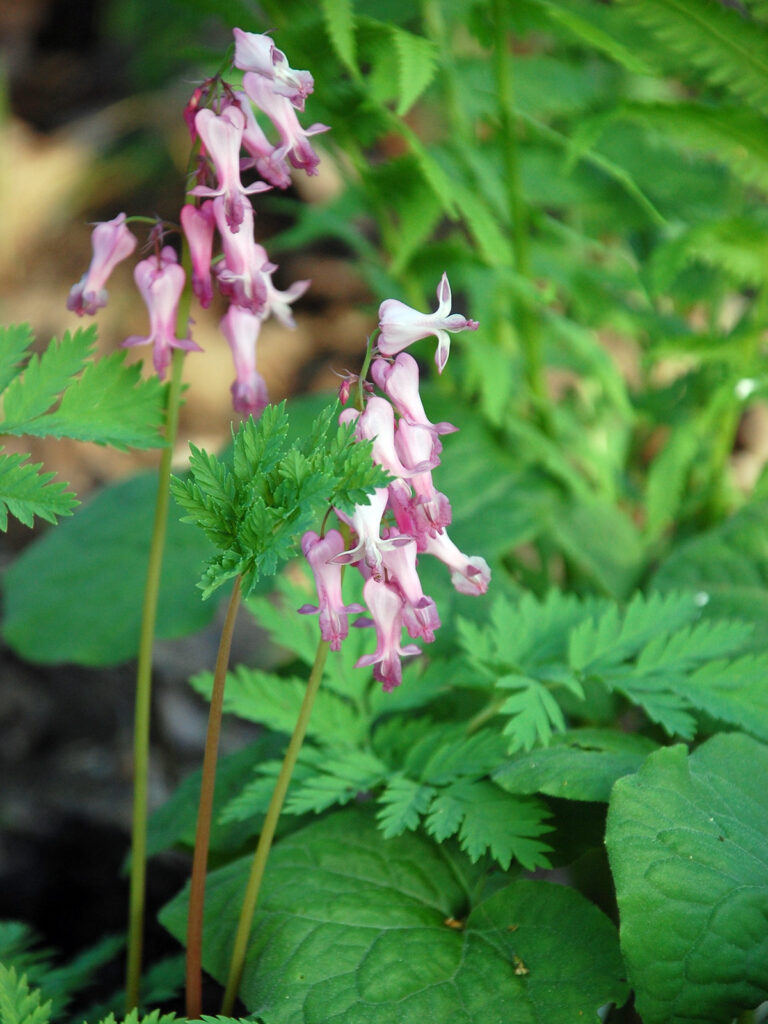
Everyone is familiar with the old-fashioned bleeding heart — it’s one of those plants that grow in every grandmother’s garden. But that one’s certainly not a native plant.
This one apparently isn’t exactly native to CNY either, and I can’t remember where I got it.
At any rate, it seems to have disappeared a number of years ago.
Wildlife: Birds
- Learn more:
- Wildflower Center: Everblooming bleeding heart
Eastern shooting star (Dodecatheon meadia)
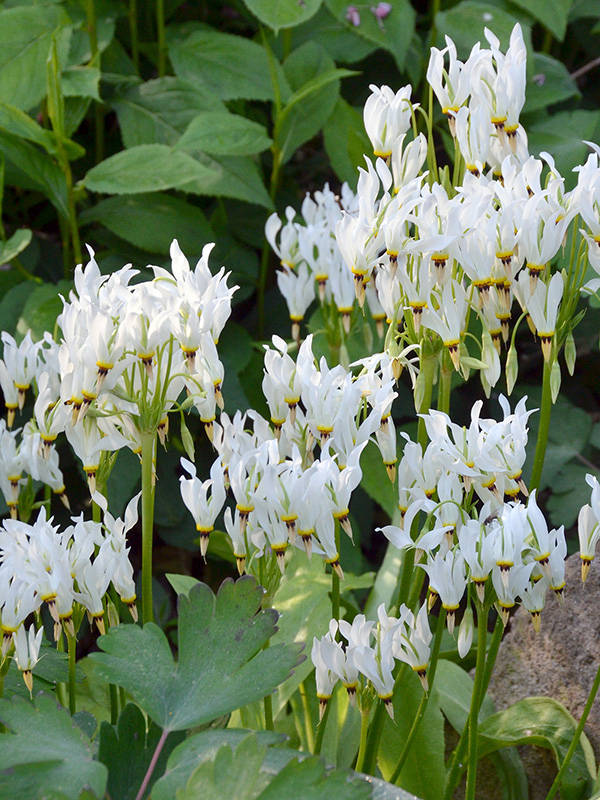
This is a plant I always think of when people wonder why anyone would want to plant native plants, i.e.”weeds.”
Who could ask for a more intriguing, beautiful flower?
** SPECIAL VALUE TO BUMBLE BEES **
- Learn more:
- Wildflower Center: Eastern shooting star
MIDWEST NATIVE: Pale coneflower (Echinacea pallida)
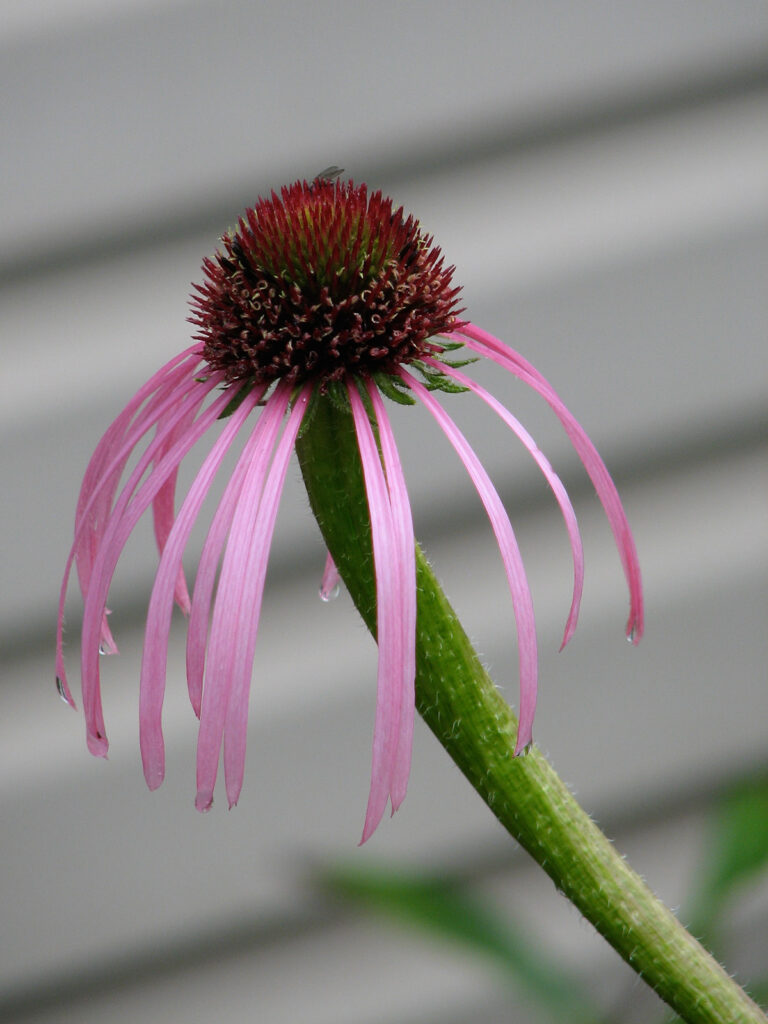
This is a very simple but elegant flower, but unfortunately not native here in CNY.
Hmmm… maybe that’s why it was hard to get established and eventually died out.
Wildlife: Bees and butterflies
** SPECIAL VALUE TO NATIVE BEES **
- Learn more:
- Wildflower Center: Pale coneflower
MIDWEST NATIVE: Purple coneflower (Echinacea purpurea)
UPDATE: I started growing this years and years ago because it was a native plant. I guess that was back in the days when native was a pretty general term. This is one of the Midwest natives that I continue to grow, though, since it not only has habitat value but also is a people-pleaser and helps keep the border flowery. Strategically, this may be a necessary to get people used to a landscape that supports life.
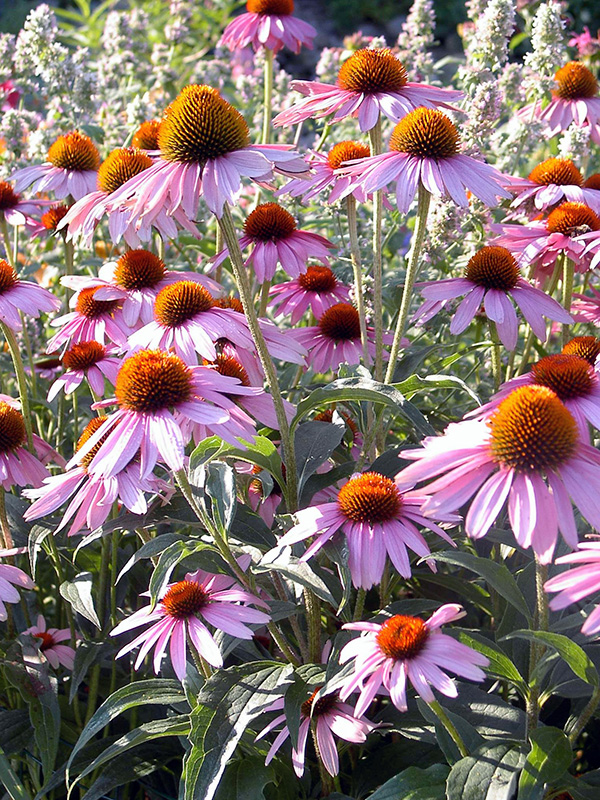
Purple coneflower is a beautiful flower that’s so easy to grow. It not only has wonderful nectar for insects, but also seeds for birds — IF you don’t deadhead it. And whether in flower or in seed, it’s a pleasure for people to look at, too.
Unfortunately, its ease of growing and beauty has prompted the horticultural industry to create numerous cultivars with odd colors and doubled centers that aren’t likely to have the habitat value of the plain species.
Wildlife: Butterflies, hummingbirds
Deer resistance: No
** SPECIAL VALUE TO NATIVE BEES **
- Learn more:
- Wildflower Center: Purple coneflower
KEYSTONE: Eastern daisy fleabane (Erigeron annuus)
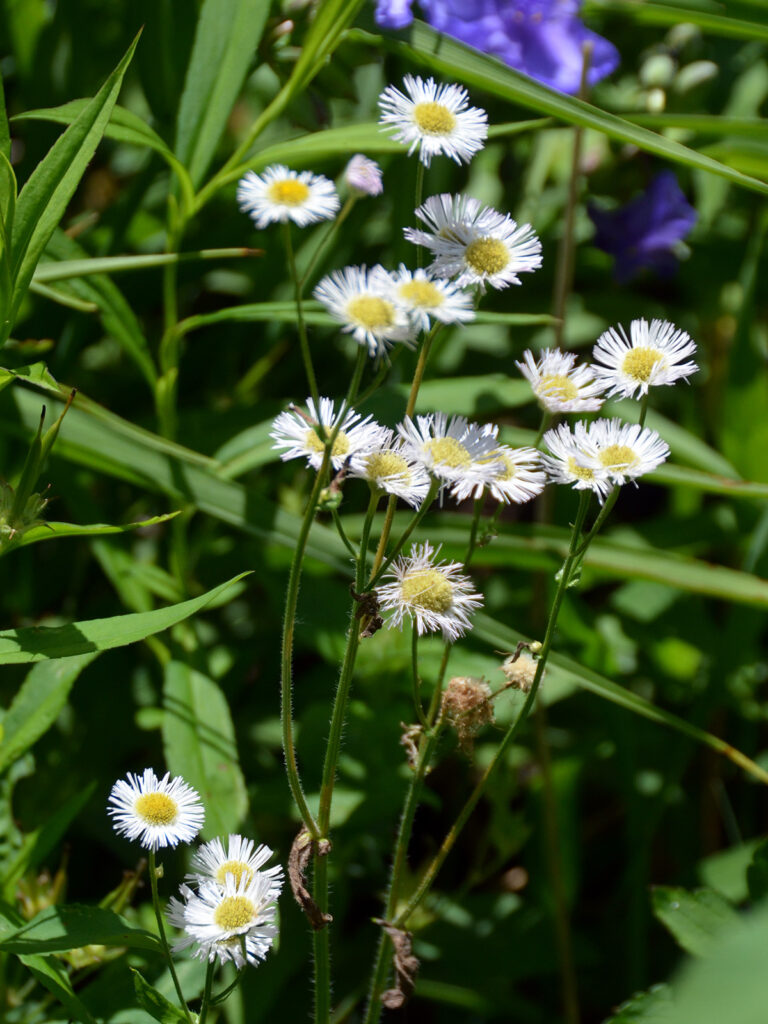
After ignoring this plant for many years (or even pulling it out as a “weed”), I noticed bees on the flowers before many other flowers were blooming.
I did some research and found that it indeed is a useful native plant, and it’s pretty, too!
- Learn more:
- Wildflower Center: Eastern daisy fleabane
- Accent Natural: Fleabane: The misunderstood native
- Brooklyn Botanic Garden: Weed of the month – but NOT a negative review despite the title!
Trout lily (Erythronium americanum)
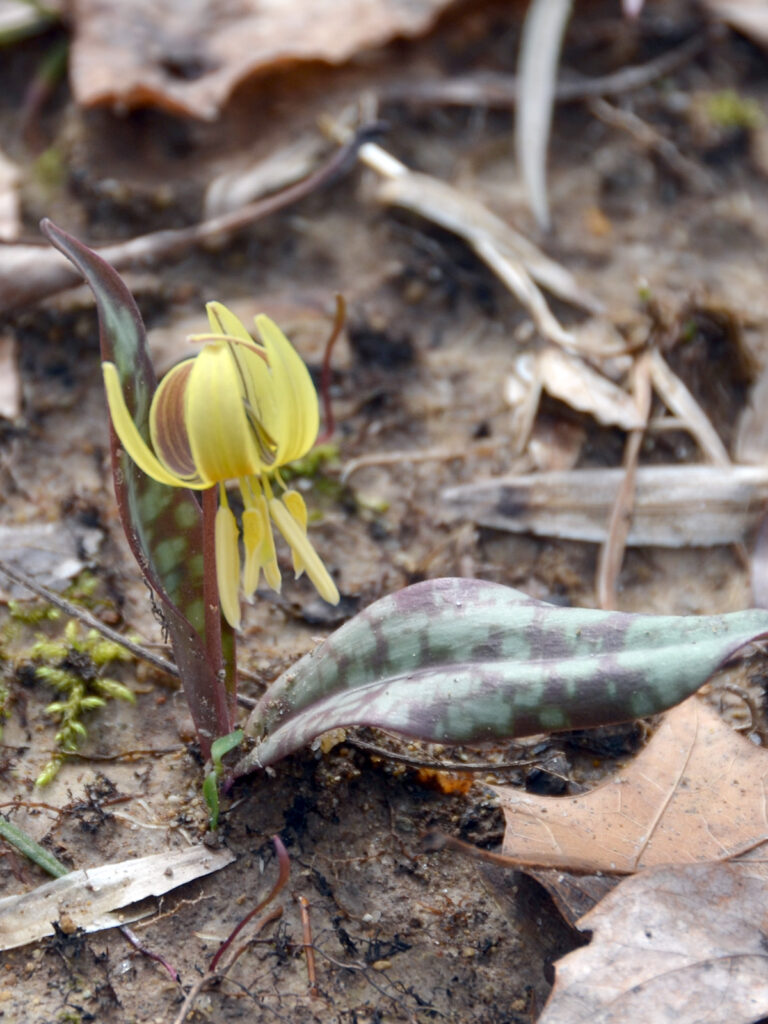
It’s easy to see the origin of its common name by looking at its trout-ish looking leaf. They grow from tiny corms and have charming, though small, yellow flowers in the early spring.
- Learn more:
- Wildflower Center: Trout lily
